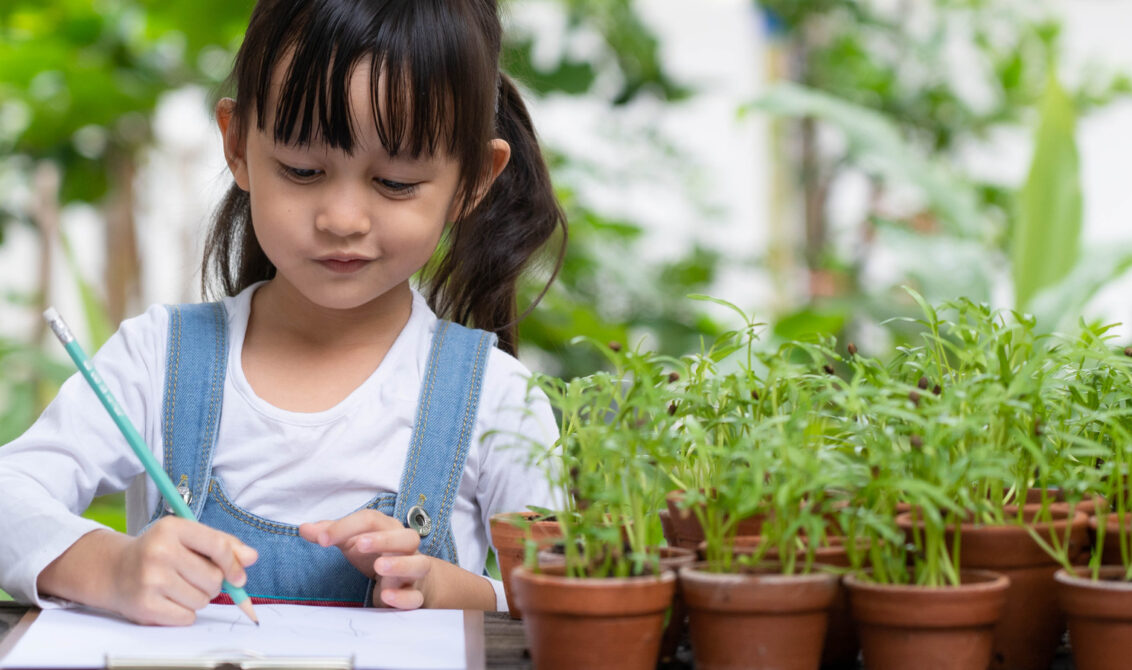
Play is an incredibly important part of education. Research shows that it can lead to deeper learning, better information retention and greater social interactions among primary school children. It also taps into children’s innate curiosity, giving them a safe and dynamic way to explore their creativity.
In science, play can function as a bridge between complex ideas and student understanding. Hands-on activities and interactive experiments allow students to grasp difficult scientific concepts and test them in practice. Along the way, they can ask questions, test hypotheses and develop their critical thinking skills.
Play in primary science can be just as stimulating as chemical reactions themselves. Here are some tried-and-tested science experiments for kids that will have your classroom bubbling with excitement.
Sink or float
Even the youngest learners can get involved in science experiments. Sink or float is a fun activity to teach your students about buoyancy. Collect a variety of different objects and predict if they will sink or float when placed in water. Children can pick things like coins, fruit, balls and bottles, and each student will take it in turns to guess whether the object will sink or float. Then, they drop the items in the water and see the results.
This activity is a great introduction to scientific thinking. It teaches children to make hypotheses and test them, and challenges the common thought that the bigger the object, the more likely it will sink. By carrying out the experiment themselves, your students will have a more concrete understanding of concepts like buoyancy and density.
Grow your own plant
Transform your class into little gardeners. Give each student a small plant pot and together, fill it with soil and a seed or bulb. Over the next weeks, set times to water the plant with students, and ask them to keep a ‘growth diary’ where they note any changes or blooms in their plant.
This experiment introduces primary students to the fundamentals of biology like plant life cycles, germination and more. It also teaches them about sunlight exposure, nutrients and factors that can possibly inhibit plants’ development. Plus, it’s a fun way to make the classroom fresher and more colourful!
Beyond the classroom, planting seeds gives children a sense of responsibility as they care for their seedlings. Patience is fostered among students too, and at the end of the experiment, they have their own plant to take home and remind them of their scientific endeavour.
Cyanotypes
Discussing the principles of light, chemistry and art with primary students sounds daunting but cyanotypes bring play to the table. Cyanotypes is a photographic printing process that involves putting leaves, flowers or common objects onto light-sensitive paper and exposing it to sunlight. The result is a snazzy blue and white image that shows the shapes and details of the item.
Cyanotypes make for an engaging activity as students select the object they want to use, arrange them on the paper and watch the transformation unfold as the sunlight hits. It’s another way of understanding the effects of light and shadow, and exploring the chemical reactions that produce the final image.
With this activity, students can start to delve into physics and chemistry, all while tapping into their artistic side. You could even work backwards and ask students to pick objects that they think will create a specific image – for example, a cyanotype that looks like a star or a whirlpool.
Magnet maze
Magnets always go down well with young kids, but getting stuck into the theory of magnetism isn’t easy. This activity can bring the principles to life. Students design a maze on a piece of paper. They swap mazes with others, and use a paperclip on top of the paper, with a magnet behind the piece of paper, to navigate the paperclip through the maze. As they do so, they come to realise that magnets can attract and move objects without direct contact. They can also experiment with the distance between the magnet and the object – how far away from the paper can they hold the magnet and it still continue to move the paperclip?
This experiment helps students learn about attraction, repulsion and spatial awareness. It can instil a little healthy competition too, where kids race one another through their mazes, or try using bigger/heavier objects to move through their mazes.
Cornflour slime
Kids love slime, and slime is an excellent way to learn about the fascinating properties of non-Newtonian fluids. To make your slime, mix cornflour (corn starch) with water – it will create a substance that feels like a liquid and a solid depending on the amount of pressure applied to it. If it’s squeezed or hit, it behaves like a solid. If it’s held gently, or fingers run through it, it behaves like a liquid.
Ask primary students to make their cornflour slime, and before touching it, ask them to predict what it will feel like and if that could change and why. Then let them poke, pour, and play with the slime, observing how it reacts to different forces. They can also change the ratios of cornflour and water to see how the consistency alters.
The sensory and interactive nature of the cornflour slime experiment is a powerful way to spark your students’ interest in the way that some substances don’t fit into the states of solid, liquid or gas. And, they’ll get to have fun while exploring this idea – and get a bit messy too!
Final thoughts
Play is just as essential to science learning as microscopes, beakers and books. Play enables primary children to develop an inquisitiveness and to research, act and review in the way that all scientists do. And, play makes complex topics more digestible, and ensures that children have diverse experiences that prepare them for learning and for life.
Why not also try Pearson International Primary Science?
For a playful approach to science in the primary classroom, check out our interactive Pearson International Primary Science course, specifically designed for international learners aged 5-11 it keeps budding scientists engaged as they move through their primary science education, into lower secondary and onto International GCSE – you can access a free slice too to try it out!
Sign up to receive our blog updates
Like what you read and want to receive more articles like this direct to your inbox? Subscribe to our blog and we’ll send you a fortnightly digest of the blog posts you may have missed, plus links to free resources to support your teaching and learning.

